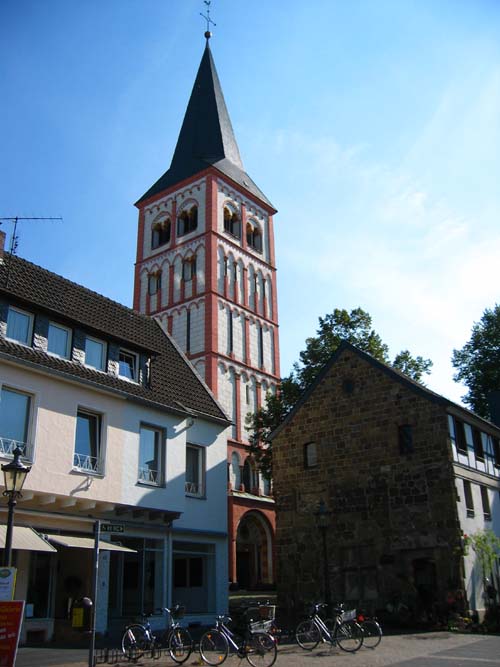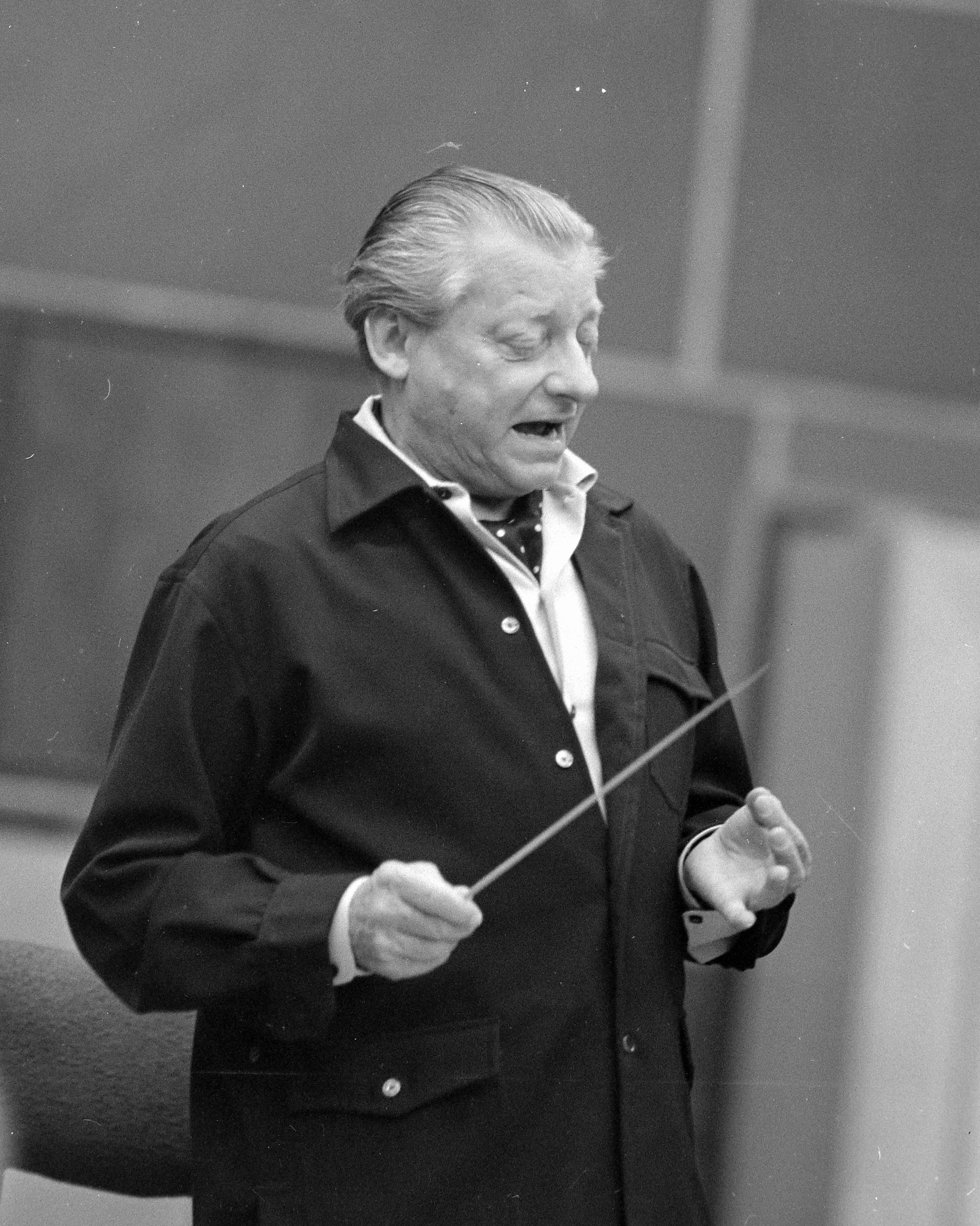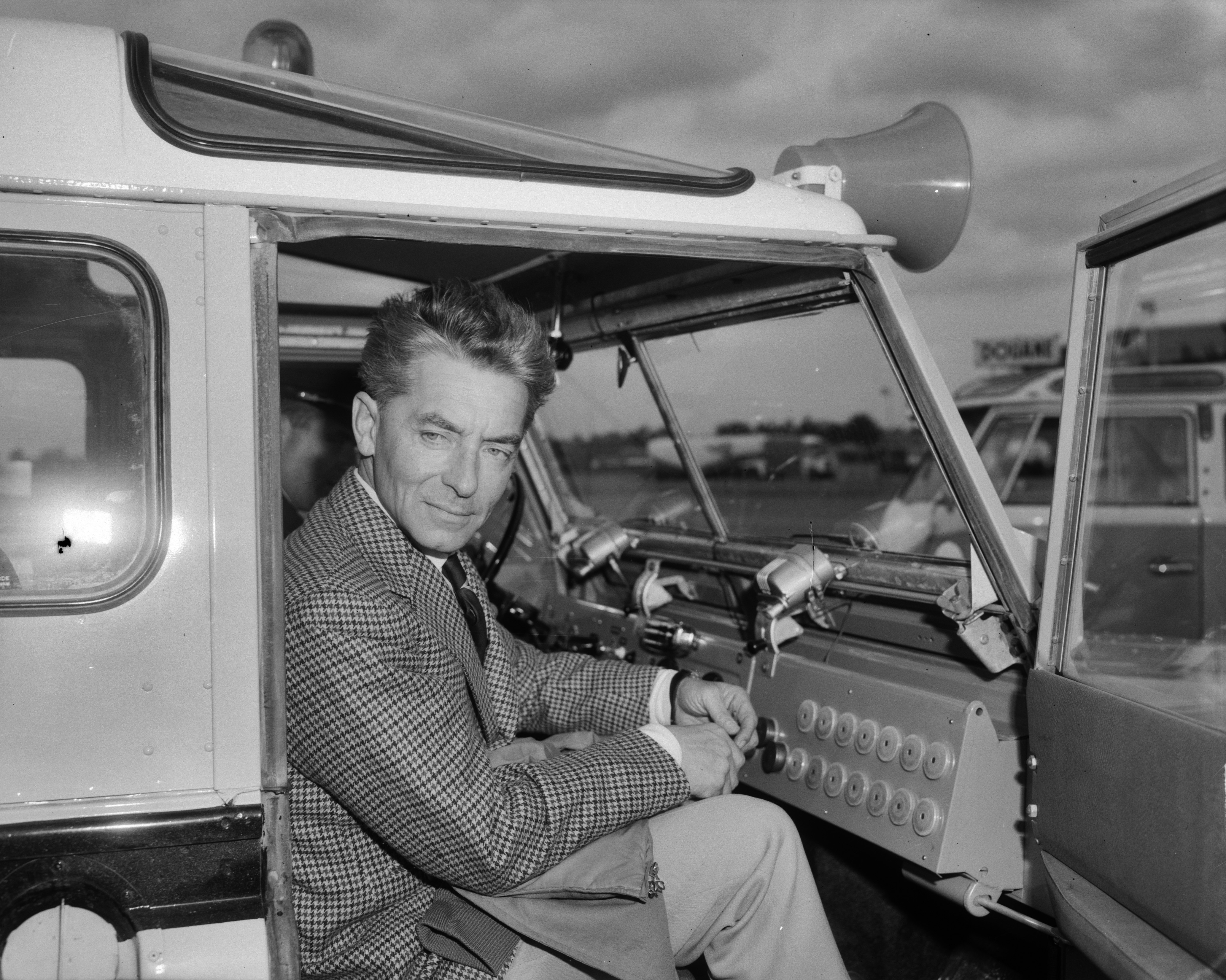|
Wilhelm Schüchter
Wilhelm Schüchter (15 December 1911 – 27 May 1974) was a German conductor. Between 1959 and 1962, he was the music director of the NHK Symphony Orchestra in Tokyo and is credited for raising its standards to an international level. He was Generalmusikdirektor in Dortmund from 1962 until his death. He opened the new opera house in 1966 with ''Der Rosenkavalier'' by Richard Strauss, and conducted the world premiere of the opera ''Eli'' by Walter Steffens after the drama of Nelly Sachs in 1967. He left a legacy of opera recordings, especially of excerpts sung in German. Career Early years Born in Siegburg on 15 December 1911, Schüchter studied piano at the Hochschule für Musik Köln, composition with Philipp Jarnach, and orchestral conducting with Hermann Abendroth. His debut as a conductor was at the Landestheater Coburg Mascagni's ''Cavalleria rusticana'' and Leoncavallo's ''Pagliacci''. In 1940, he was at the Mainfranken Theater Würzburg, a year later he worked at the ... [...More Info...] [...Related Items...] OR: [Wikipedia] [Google] [Baidu] |
Siegburg
Siegburg (; i.e. ''fort on the Sieg (river), Sieg river''; Ripuarian language, Ripuarian: ''Sieburch'') is a city in the district of Rhein-Sieg-Kreis in North Rhine-Westphalia, Germany. It is located on the banks of the rivers Sieg (river), Sieg and Agger (river), Agger, from the former seat of West German government Bonn and from Cologne. The population of the city was 39,192 in the 2013 census. Geography Siegburg is located approximately east of the river Rhine, at the confluence where the Agger (river), Agger joins the Sieg (river), Sieg, in the southeast corner of the Cologne Lowland. Neighbouring towns include Troisdorf, Lohmar, Sankt Augustin and Hennef (Sieg), Hennef. The nearby cities of Cologne and Bonn are easily accessible through good transport links. The highest point of the urban area is above sea level (Normalhöhennull, NHN) in the Braschoß area and the lowest point is just under above sea level at the mouth of the Agger (river), Agger. History Archbishop ... [...More Info...] [...Related Items...] OR: [Wikipedia] [Google] [Baidu] |
Cavalleria Rusticana
''Cavalleria rusticana'' (; ) is an opera in one act by Pietro Mascagni to an Italian libretto by Giovanni Targioni-Tozzetti and Guido Menasci, adapted from an 1880 Cavalleria rusticana (short story), short story of the same name and subsequent play by Giovanni Verga. Considered one of the classic ''verismo'' operas, it premiered on 17 May 1890 at the Teatro dell'Opera di Roma, Teatro Costanzi in Rome. Since 1893 in music, 1893, it has often been performed in a so-called ''Cav/Pag'' double-bill with ''Pagliacci'' by Ruggero Leoncavallo. Composition history In July 1888 the Milanese music publisher Edoardo Sonzogno announced a competition open to all young Italian composers who had not yet had an opera performed on stage. They were invited to submit a one-act opera which would be judged by a jury of five prominent Italian critics and composers. The best three would be staged in Rome at Sonzogno's expense. Mascagni heard about the competition only two months before the closing da ... [...More Info...] [...Related Items...] OR: [Wikipedia] [Google] [Baidu] |
Dortmunder Philharmoniker
The Dortmunder Philharmoniker (Dortmund Philharmonic) are a German symphony orchestra based in Dortmund. The orchestra of the Theater Dortmund performs opera in the Opernhaus Dortmund and concert in the Konzerthaus Dortmund. The orchestra was founded in 1887 and has been shaped by conductors such as Wilhelm Schüchter, Marek Janowski, Moshe Atzmon and Jac van Steen. History The ''Dortmunder Philharmoniker'' were founded as ''Orchesterverein'' in 1887. They played at different locations until the Stadttheater was opened in 1904. Since then they played also opera. The names of orchestra changed with organisational and functional changes, ''Hüttner Kapelle'', ''Städtisches Orchester'' (Orchestra of the City), ''Philharmonisches Orchester der Stadt Dortmund'', ''Philharmonisches Orchester Dortmund'', now ''Dortmunder Philharmoniker''. The concert venue after World War II was the Kleine Westfalenhalle. In 1966 they opened the new opera house Opernhaus Dortmund with a performan ... [...More Info...] [...Related Items...] OR: [Wikipedia] [Google] [Baidu] |
Yokohama
is the List of cities in Japan, second-largest city in Japan by population as well as by area, and the country's most populous Municipalities of Japan, municipality. It is the capital and most populous city in Kanagawa Prefecture, with a population of 3.7 million in 2023. It lies on Tokyo Bay, south of Tokyo, in the Kantō region of the main island of Honshu. Yokohama is also the major economic, cultural, and commercial hub of the Greater Tokyo Area along the Keihin region, Keihin Industrial Zone. Yokohama was one of the cities to open for trade with the Western world, West following the 1859 end of the Sakoku, policy of seclusion and has since been known as a cosmopolitan port city, after Kobe opened in 1853. Yokohama is the home of many Japan's firsts in the Meiji (era), Meiji period, including the first foreign trading port and Chinatown (1859), European-style sport venues (1860s), English-language newspaper (1861), confectionery and beer manufacturing (1865), daily newspap ... [...More Info...] [...Related Items...] OR: [Wikipedia] [Google] [Baidu] |
Sendai
is the capital Cities of Japan, city of Miyagi Prefecture and the largest city in the Tōhoku region. , the city had a population of 1,098,335 in 539,698 households, making it the List of cities in Japan, twelfth most populated city in Japan. The modern city was founded in 1600 by the ''daimyō'' Date Masamune. It is nicknamed the ; there are Japanese zelkova trees lining many of the main thoroughfares such as and . In the summer, the Sendai Tanabata Festival, the largest Tanabata festival in Japan, is held. In winter, the trees are decorated with thousands of lights for the , lasting through most of December. The city is also home to Tohoku University, one of the former Imperial Universities. On 11 March 2011, coastal areas of the city suffered catastrophic damage from a 2011 Tōhoku earthquake and tsunami, magnitude 9.0 offshore earthquake,] which triggered a destructive tsunami. History Edo period Although the Sendai area was inhabited as early as 20,000 years ago, the ... [...More Info...] [...Related Items...] OR: [Wikipedia] [Google] [Baidu] |
Berlin Philharmonic Orchestra
The Berlin Philharmonic () is a German orchestra based in Berlin. It is one of the most popular, acclaimed and well-respected orchestras in the world. Throughout the 20th century, the orchestra was led by conductors Wilhelm Furtwängler (1922–45; 1952–54), Herbert von Karajan (1955–89), and Claudio Abbado (1989–2002). The orchestra’s early years, particularly during the later Nazi era, saw a heavy focus on the Austro-Germanic repertoire, featuring composers such as Beethoven, Brahms, Bruckner, Strauss, and Wagner. Under Furtwängler and Karajan, it became renowned for its distinctive sound and high-quality musicianship and toured widely. In the latter half of the 20th century, the orchestra broadened its repertoire to include more Classical, Romantic, and 20th-century works, as well as lesser-known compositions and music from outside the Austro-German tradition. Since Furtwängler's tenure, the orchestra has made numerous recordings, with the number of recordings ex ... [...More Info...] [...Related Items...] OR: [Wikipedia] [Google] [Baidu] |
North German Radio Symphony Orchestra
The NDR Elbphilharmonie Orchestra () is a German radio orchestra. Affiliated with the ''Norddeutscher Rundfunk'' (NDR; North German Broadcasting), the orchestra is based at the Elbphilharmonie in Hamburg, Germany. Earlier the ensemble was called the NDR Symphony Orchestra (), and was also known in English as the North German Radio Symphony Orchestra. History British occupation authorities founded the orchestra after World War II as part of Radio Hamburg (NWDR), which was the only radio station in what would become West Germany not destroyed during the war. The first musicians came mostly from the ranks of the old Nazi-controlled ''Großes Rundfunkorchester des Reichssenders Hamburg''. Hans Schmidt-Isserstedt, who was living near Hamburg, was given the task of assembling the members, something he accomplished over a period of six months. Schmidt-Isserstedt conducted the orchestra's first concert in November 1945, with Yehudi Menuhin as soloist. Schmidt-Isserstedt served as ... [...More Info...] [...Related Items...] OR: [Wikipedia] [Google] [Baidu] |
Hans Schmidt-Isserstedt
Hans Schmidt-Isserstedt (5 May 190028 May 1973) was a German conductor and composer. After studying at several music academies, he worked in German opera houses between 1923 and 1945, first as a répétiteur and then in increasingly senior conducting posts, ending as Generalmusikdirektor of the Deutsche Oper Berlin. After the Second World War, Schmidt-Isserstedt was invited by the occupying British forces to form the Northwest German Radio Symphony Orchestra, of which he was musical director and chief conductor from 1945 to 1971. He was a frequent guest conductor for leading symphony orchestras around the world, and returned to opera from time to time, including appearances at Glyndebourne and Covent Garden as well as the Hamburg State Opera. Schmidt-Isserstedt was known for his transparent orchestral textures, strict rhythmic precision, and rejection of superfluous gestures and mannerisms on the rostrum. His extensive recorded legacy features the Austro-German classics with ... [...More Info...] [...Related Items...] OR: [Wikipedia] [Google] [Baidu] |
Neues Schauspielhaus
The Metropol, formerly Neues Schauspielhaus (), at 5 Nollendorfplatz in the Schöneberg district of Berlin was built in 1905 as a theatre, with a separate concert hall (the Mozartsaal) above, in the then-fashionable Art Nouveau style. In 1911 the Mozartsaal was converted into a cinema with 925 seats. From the beginning of World War I the theatre turned into an operetta stage until in 1927, Erwin Piscator and Tilla Durieux opened their ''Theater am Nollendorfplatz'' in the building.There was cinema just across the road at number 4, called the Ufa-Theater am Nollendorfplatz from 1924 to 1927, with which it is sometimes confused. Piscator created critical performances by playwrights like Ernst Toller and Walter Mehring, with artists like Bertolt Brecht, George Grosz and John Heartfield at times working with him. Piscator's theater went bankrupt in 1929, and he emigrated in 1931. After the Nazi takeover the house became an operetta theatre once again, now under the direction of Hara ... [...More Info...] [...Related Items...] OR: [Wikipedia] [Google] [Baidu] |
Kapellmeister
( , , ), from German (chapel) and (master), literally "master of the chapel choir", designates the leader of an ensemble of musicians. Originally used to refer to somebody in charge of music in a chapel, the term has evolved considerably in its meaning and is today used for denoting the leader of a musical ensemble, often smaller ones used for TV, radio, and theatres. Historical usage In German-speaking countries during the approximate period 1500–1800, the word often designated the director of music for a monarch or nobleman. For English speakers, it is this sense of the term that is most often encountered, since it appears frequently in biographical writing about composers who worked in German-speaking countries. During that period, in Italy, the position (Italian: ''maestro di capella'') largely referred to directors of music assigned to cathedrals and sacred institutions rather than those under royal or aristocratic patronage. A Kapellmeister position was a senior one ... [...More Info...] [...Related Items...] OR: [Wikipedia] [Google] [Baidu] |
Herbert Von Karajan
Herbert von Karajan (; born ''Heribert Adolf Ernst Karajan''; 5 April 1908 – 16 July 1989) was an Austrian conductor. He was principal conductor of the Berlin Philharmonic for 34 years. During the Nazi era, he debuted at the Salzburg Festival, with the Vienna Philharmonic, the Berlin Philharmonic, and during World War II he conducted at the Berlin State Opera. Generally regarded as one of the greatest conductors of the 20th century, he was a controversial but dominant figure in European classical music from the mid-1950s until his death. Part of the reason for this was the large number of recordings he made and their prominence during his lifetime. By one estimate, he sold 200 million records. Biography Early life Genealogy The Karajans were of Greek ancestry. Herbert's great-great-grandfather, Georg Karajan (Geórgios Karajánnis, ), was born in Kozani, in the Ottoman province of Rumelia (now in Greece), leaving for Vienna in 1767, and eventually Chemnitz, Electorate of ... [...More Info...] [...Related Items...] OR: [Wikipedia] [Google] [Baidu] |







